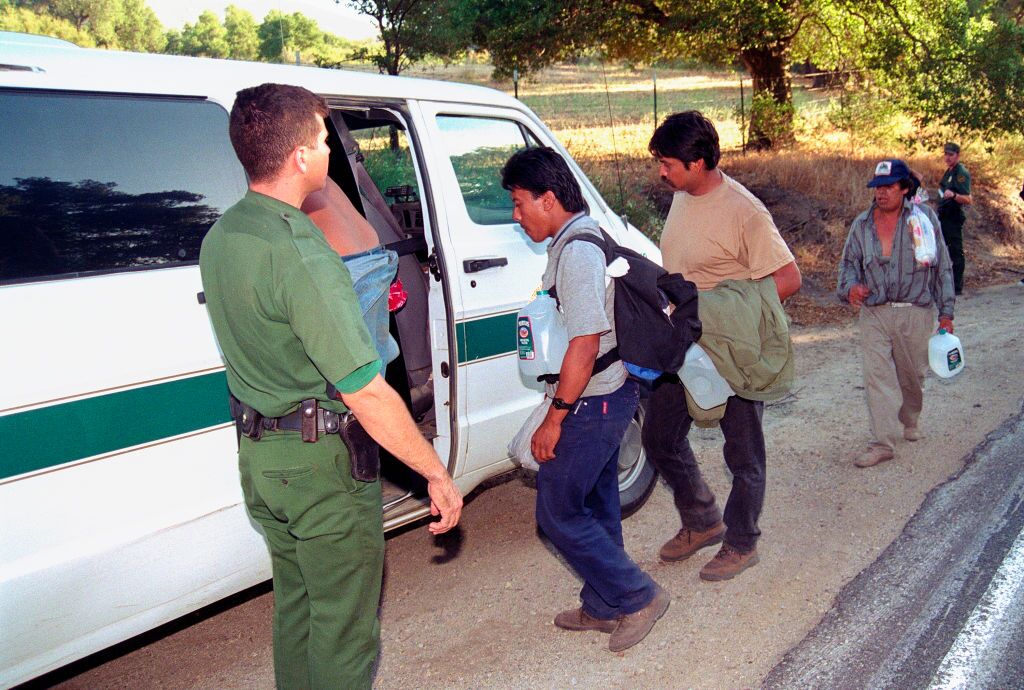Decades of lawmaking and political gridlock have made U.S. immigration a crisis. Advocates call for broader reforms that tie immigration policy to the economy, youth opportunity and justice.
This article is Part 2 in Ms.’ three-part series exploring how U.S. immigration policy affects women and families. Read Part 1 here. Part 3 publishes Friday, Oct. 17.
I started my career as an immigration attorney almost 30 years ago, on the very day that the Illegal Immigration Reform and Immigrant Responsibility Act of 1996 went into effect. This draconian legislation revised immigration law, skewing it toward accelerated deportation, introducing new barriers to asylum and instituting harsher penalties for unauthorized entry. It took away much of the discretion that kept the system in balance, such as allowing judges to weigh a person’s ties to the country when determining whether deportation was necessary.
The 1996 law reflected a negative view of immigration, as something to be prevented, not welcomed. It laid the groundwork for swells of anti-immigrant measures in the years to come. And Congress’ inability to reset the balance, despite multiple efforts to “fix ’96” and pass comprehensive immigration reform, cemented a top-heavy, deportation-driven immigration system that has played right into Trump’s hands.

The challenges facing women seeking asylum are just one piece of a much larger immigration crisis decades in the making. This tragedy is playing out every day in the separation of families, the deportation of longtime residents and asylum seekers, and the lurking presence of masked and heavily armed Immigration and Customs Enforcement agents at children’s schools and churches. But it is also being felt in missed economic opportunity, increased violence against politicians and activists, and a growing disregard for the U.S. Constitution. What happens to immigrants happens to us all because immigration policy touches every aspect of our lives.
Many people don’t recognize these connections. Consequently, before we can achieve immigration reforms, we must build a consensus around their importance. Finding this consensus won’t be easy during a time when national Republican leaders embrace mass deportation and many Democrats shy away from immigration reform as a sure way to alienate voters.
We can break out of this impasse, but it requires a new approach to “fixing” immigration. Rather than focus solely on reforming immigration laws, we need to pass laws that incorporate immigration into broader objectives such as improving the economy, promoting opportunities for youth or addressing disparities in the judicial system. If immigration becomes a component for advancing such goals, rather than a problem and solution unto itself, we have a chance to build both a better immigration system and a better country.
Cynthia Buiza, former executive director of the California Immigrant Policy Center, believes this begins by thinking about the future: “It’s about being a good ancestor” for the generations to come.
Buiza grew up in the Philippines under the dictatorship of Ferdinand Marcos. Her early student activism evolved into a career in migration and human rights that eventually brought her to study in the U.S. and then to remain as a champion for immigration reform, migrant rights and women’s equality. She served as a commissioner for California 100, an innovative project that brought together experts from across the state to build an exhaustive policy proposal to ensure California could thrive for the next century.
Buiza notes that immigration issues and solutions are embedded throughout the California 100 framework, precisely because immigration is a part of every aspect of our future. She describes the vision created by the commissioners as grounded in the shared values of resilience, innovation, inclusion, sustainability and accountability.
She says change starts by imagining a better life for everyone: “What can we do for each other and what can we do for the people who are going to inherit a society or a community to help us survive and thrive?”
One of the things that is so striking about Buiza’s experience is how much it is rooted in deep conversations about community. This is also a critical component of the Welcoming America movement, founded in 2009 with the nonpartisan mission of creating more inclusive communities where immigrants and all newcomers are welcome.
According to Rachel Perić, executive director of Welcoming America, the work of building healthier democracies begins from the community up. What started as potlucks and dialogues that introduced immigrant and nonimmigrant community members to each other has evolved into a sophisticated network of more than 300 local governments and nonprofits helping to dispel fear of the other by asking how we can all prosper.
Perić says that a welcoming community is ideally “a place where everyone can thrive, [be] valued, contribute to their fullest.” Welcoming initiatives, she adds, recognize that “communities need people for talent and workforce. … Getting people to come, set down roots, creat[ing] a welcoming environment is part of that.” Identifying and eliminating barriers to inclusion based on race, language and immigration status are critical to creating that sense of possibility for all.
They’re also necessary antidotes to fearmongering. Perić believes welcoming allows people to build a new perspective on immigration and change, allowing a community to stop the scapegoating. Then, she says, “it’s not us versus them—it’s we.”
Both California 100 and the Welcoming America movement champion a more systemic analysis of interconnection and inclusion as an essential part of policy change. If we start with the premise that “it’s not us versus them,” can we overcome the history of politically and legislatively isolating immigration reform from broader policy initiatives?
It will be hard work, but Suzette Brooks Masters, a philanthropic adviser and thought leader on immigration, believes we must try.
Brooks Masters studies the factors that make for a healthy democracy and enable societies to thrive together. After witnessing multiple failed attempts at comprehensive immigration reform, she now believes that trying to reform immigration as a stand-alone policy issue is doomed to fail.
“I’ve come around to the view that immigration should not exist in a vacuum,” she says. “It has fallen victim to a single-issue partisan dynamic and is therefore easier to polarize and demagogue.”
She argues that when immigration is isolated as a political issue, reductionism and partisanship take over and the public stops seeing its connection to the national interest: “We no longer make the connection between immigration policy and other key issues like workforce, healthcare, elder care, childcare and economic competitiveness.”
This article is the second installment in Ms.’ three-part series exploring how U.S. immigration policy affects women, families, and the broader pursuit of equity; Part 3, out Friday, examines lessons from past feminist policy wins that could guide a more just immigration future.
Great Job Mary Giovagnoli & the Team @ Ms. Magazine Source link for sharing this story.





